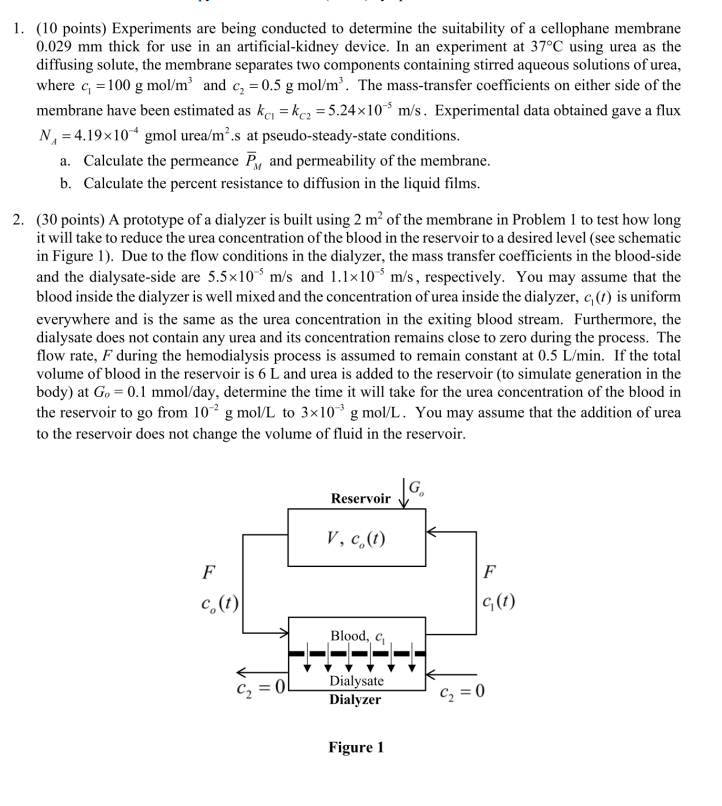Answered step by step
Verified Expert Solution
Question
1 Approved Answer
Part 2 specifically!!! ( 1 0 points ) Experiments are being conducted to determine the suitability of a cellophane membrane 0 . 0 2 9
Part specifically!!! points Experiments are being conducted to determine the suitability of a cellophane membrane
thick for use in an artificialkidney device. In an experiment at using urea as the
diffusing solute, the membrane separates two components containing stirred aqueous solutions of urea,
where gmo and gmo The masstransfer coefficients on either side of the
membrane have been estimated as Experimental data obtained gave a flux
gmol urea at pseudosteadystate conditions.
a Calculate the permeance and permeability of the membrane.
b Calculate the percent resistance to diffusion in the liquid films.
points A prototype of a dialyzer is built using of the membrane in Problem to test how long
it will take to reduce the urea concentration of the blood in the reservoir to a desired level see schematic
in Figure Due to the flow conditions in the dialyzer, the mass transfer coefficients in the bloodside
and the dialysateside are and respectively. You may assume that the
blood inside the dialyzer is well mixed and the concentration of urea inside the dialyzer, is uniform
everywhere and is the same as the urea concentration in the exiting blood stream. Furthermore, the
dialysate does not contain any urea and its concentration remains close to zero during the process. The
flow rate, during the hemodialysis process is assumed to remain constant at If the total
volume of blood in the reservoir is and urea is added to the reservoir to simulate generation in the
body at mmo day, determine the time it will take for the urea concentration of the blood in
the reservoir to go from gmo to gmo You may assume that the addition of urea
to the reservoir does not change the volume of fluid in the reservoir.

Step by Step Solution
There are 3 Steps involved in it
Step: 1

Get Instant Access to Expert-Tailored Solutions
See step-by-step solutions with expert insights and AI powered tools for academic success
Step: 2

Step: 3

Ace Your Homework with AI
Get the answers you need in no time with our AI-driven, step-by-step assistance
Get Started


